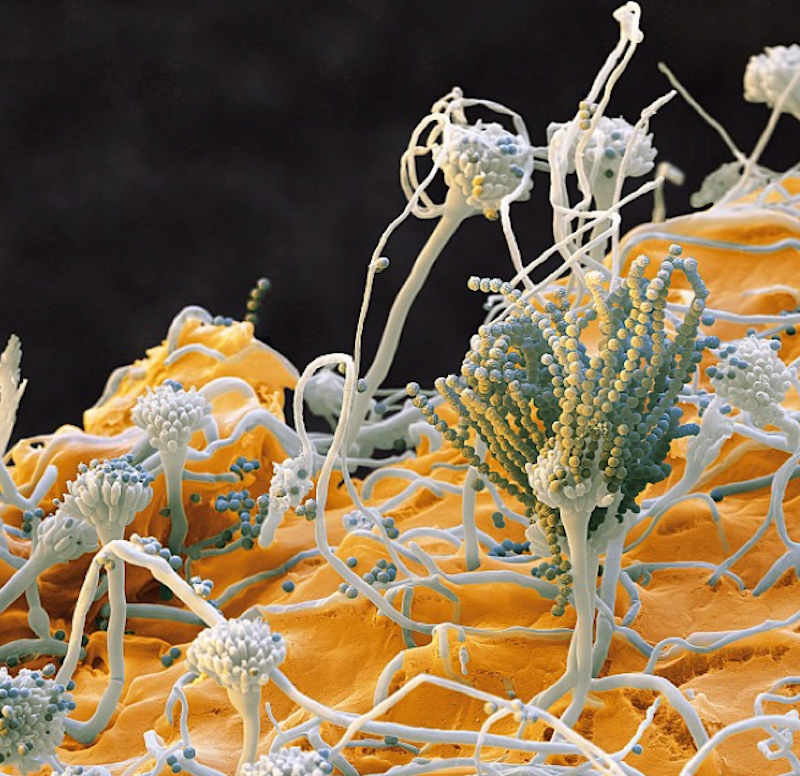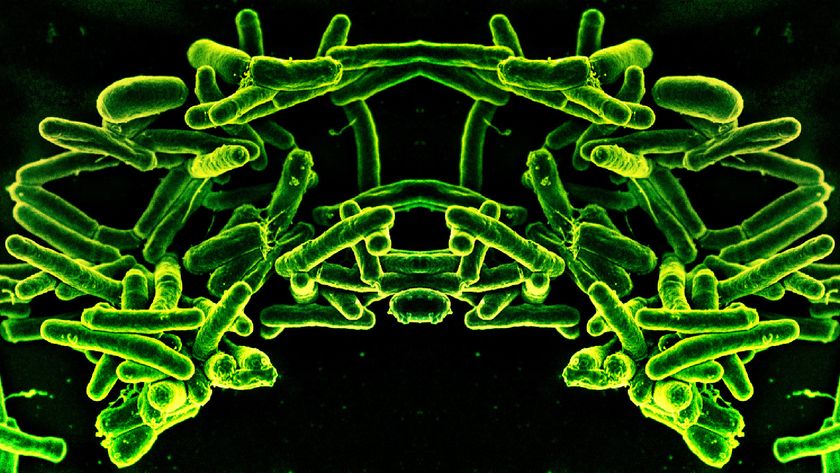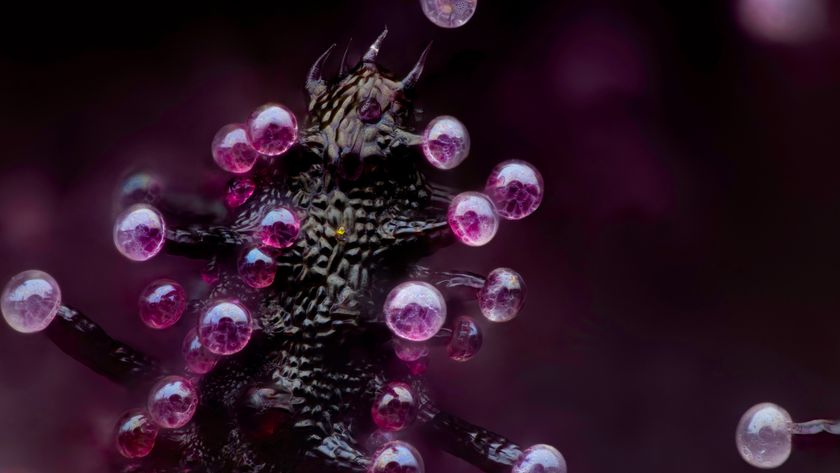
This 400x-magnified image is a very colorful close-up look at a microbiological water park of sorts created by the fungus Emericella nidulans. Fungi with filaments, like this one, produce a thin layer of protein called hydrophobin on their spherical spores. This protein sheet ensures water rolls off the spores, creating tiny slip 'n slides.
Hydrophobin is a cysteine-rich protein, an amino acid that can be formed in humans. Emericella nidulans has been used in research for more than 50 years, including in studies of recombination, DNA repair, mutation and cell cycle control.
Other types of fungi, like mushrooms, also have a layer of hydrophobin. While this image may look colorful, the fungi normally appears green to the naked eye.
Follow LiveScience @livescience, Facebook & Google+.
Sign up for the Live Science daily newsletter now
Get the world’s most fascinating discoveries delivered straight to your inbox.













